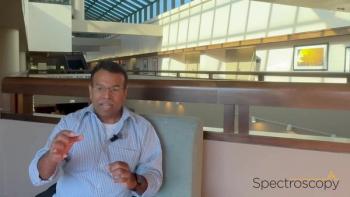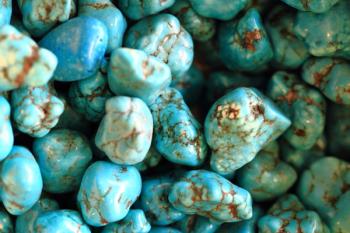
Using Raman and LIBS for Mineral Characterization
A recent study conducted by researchers from Northwestern Polytechnical University explored how to improve laser-induced breakdown spectroscopy (LIBS) for analyzing complex mineral samples
This video was created with NotebookLM.
A recent study conducted by researchers from Northwestern Polytechnical University explored how to improve laser-induced breakdown spectroscopy (LIBS) for analyzing complex mineral samples. This study, which was published in the journal Spectrochimica Acta Part B: Atomic Spectroscopy, introduces a multi-order moment fusion strategy that integrates advanced statistical features and Raman spectroscopy for improved classification accuracy (1).
LIBS uses a short-laser pulse to create a micro-plasma on the sample surface for measurements (2). Because the technique uses lasers, it can conduct single-spot analysis quickly (2). Traditional LIBS techniques rely mainly on spectral intensity measurements, which often overlook the wealth of statistical information contained in higher-order features such as variance, skewness, and kurtosis (1). This limitation has historically hindered both the precision and generalizability of LIBS when applied to challenging sample types, including heterogeneous mineral compositions (1).
In their study, the researchers sought to improve LIBS measurements by developing a method with the ability to extract multi-order statistical moments from the LIBS spectra. Their method then standardized them using Z-score normalization to reduce dimensional biases (1).
As part of the experimental procedure, the researchers applied a random forest (RF) algorithm to determine the importance of each feature, assigning weights that emphasize their contribution to classification outcomes (1). These enriched LIBS features were subsequently fused with the Raman spectral data at the feature level, generating a comprehensive, multi-parameter representation of each sample (1).
The researchers found that their method was useful in improving classification accuracy. Conventional LIBS approaches generally obtain approximately an 83% accuracy rate (1). However, the researchers’ method was able to achieve a 95.67% classification accuracy (1). They also found that when their method was integrated with Raman spectroscopy, the classification accuracy was improved further to over 99% (1).
The researchers highlight that their strategy not only improves the accuracy of LIBS-based analysis but also broadens its applicability across various domains. From mineral identification to industrial material characterization, the enhanced robustness and generalizability of this method position it as a powerful tool for tackling complex analytical challenges (1).
References
- Li, Y.; Dong, Z.; Ma, N.; et al. Multi-order Moment Fusion of Laser-induced Breakdown Spectroscopy (LIBS) and Raman Spectroscopy for Mineral Classification. Spectrochimica Acta Part B: At. Spectrosc. 2025, 233, 107302. DOI:
10.1016/j.sab.2025.107302 - Applied Spectra: What is LIBS? Applied Spectra. Available at:
https://appliedspectra.com/technology/libs.html (accessed 2025-08-26).
Newsletter
Get essential updates on the latest spectroscopy technologies, regulatory standards, and best practices—subscribe today to Spectroscopy.





